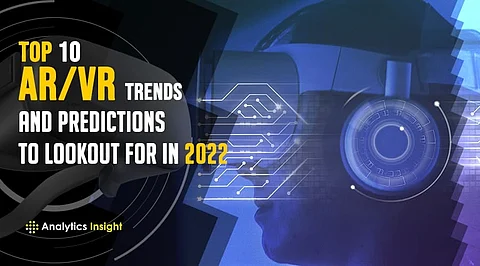
- InsightsInsights
- CryptocurrenciesCryptocurrencies
- Stocks
- White Papers
- IndustryIndustry
- GeographyGeography


Since their beginnings, augmented reality and virtual reality have left a lasting influence on people all over the world. These technologies have not only piqued the interest of smartphone users but also of new and established businesses, prompting entrepreneurs and marketers to consider investing in AR/VR app development. Technology has had a revolutionary influence on the corporate sector in recent years. In the next years, the AR/VR technology developments will force every businessperson to consult specialists and enter this area to gain a larger share of the anticipated market size of US$1,274.4 billion in 2030.
Artificial intelligence augmented reality, and virtual reality have all made inroads into the corporate sector and have each proven their worth. AR/VR developers and executives of AR/VR development companies will, nevertheless, look forward to exploring the possibilities of their partnership in the future. They'll look at how advanced machine learning algorithms and other AI approaches may assist computers and other gadgets inefficiently seeing and comprehending things. As a result, highly engaging workplaces and enhanced picture recognition capabilities will develop.
Giving customers a virtual shopping option has been a popular practice among retailers such as American Apparel, Uniqlo, Lacoste, Kohls, and Sephora. Others have created virtual fitting rooms for their clients. Customers may now sample before they buy from the comfort of their own homes. Because of the way social distancing regulations influence retail during the COVID-19 pandemic, this is extremely significant. AR is in an excellent position to tackle this issue.
The use of technology for interior navigation is one of the developing trends and the future scope of AR and VR. In the same way that GPS-enabled software and maps guide us to a store, hospital, or other location from the outside augmented reality-powered navigation devices will guide people inside. They'll show them how to go to any product, software, or place entertainingly and simply, providing them the best experience possible without relying on others.
AR, MR, and VR are reshaping the healthcare business by serving a variety of objectives. Every day, medical care evolves to guarantee that physicians and professionals can give the best care possible to their patients. AR is one of the most recent augmented reality innovations in healthcare. In fact, by 2026, this industry is anticipated to be worth US$2.4 billion. AR is now being used by medical practitioners to prepare for surgery. It is used by surgeons for checklists and walkthroughs of organs that need to be worked on.
Display improvements are another AR and VR industry trend that will continue to expand. The display of the AR/VR headsets will be enlarged this year to ensure that the massive amount of high-power material shows on the screen without becoming blurry or causing eye strain.
The technology will have a significant impact on how we approach AR/VR. By providing a super-fast mobile network, 5G will accelerate data transfer to the cloud, processing, and the construction of a virtual picture that will eventually provide customers with a better virtual experience. Furthermore, the technology will improve the experience even in low-bandwidth, low-power situations, allowing for better-augmented reality with less expensive headsets and devices.
Virtual reality's immersive nature will assist teachers in engaging students with studying content in a variety of fresh and fascinating ways. It will increase the likelihood of educating distance learners in virtual reality classrooms, ensuring that they do not miss out on the benefits of studying in a collaborative setting.
Autonomous vehicles are gaining popularity across the world. People are eagerly awaiting the opportunity to ride in these self-driving vehicles. However, what amazes the automakers is the incorporation of augmented reality into these cars in the not-too-distant future. Various automotive industry executives will embrace the notion of leveraging technological trends such as voice assistants, in-car AR, and more to alter the way people move and travel in the future.
Remote help and cooperation will be made easier thanks to AR/VR developments. Technicians will be able to observe on-site issues in real-time via their mobile phones or laptops thanks to the new technology. They will be able to examine everything and transfer the data (pictures, videos, or PDFs) to remote places that will stay locked on the shared scene with suitable comments.
The AR experience was only available on mobile phones. To enter the augmented reality, one must first download and install the smartphone application. The WebAR, on the other hand, is already a reality. As the name suggests, this will make it easier for people to engage with augmented reality on the web. It will allow people to enjoy AR on Google Chrome, Mozilla Firefox, or other browsers independent of the device they are using, lowering the barriers to its use and improving the overall experience.
